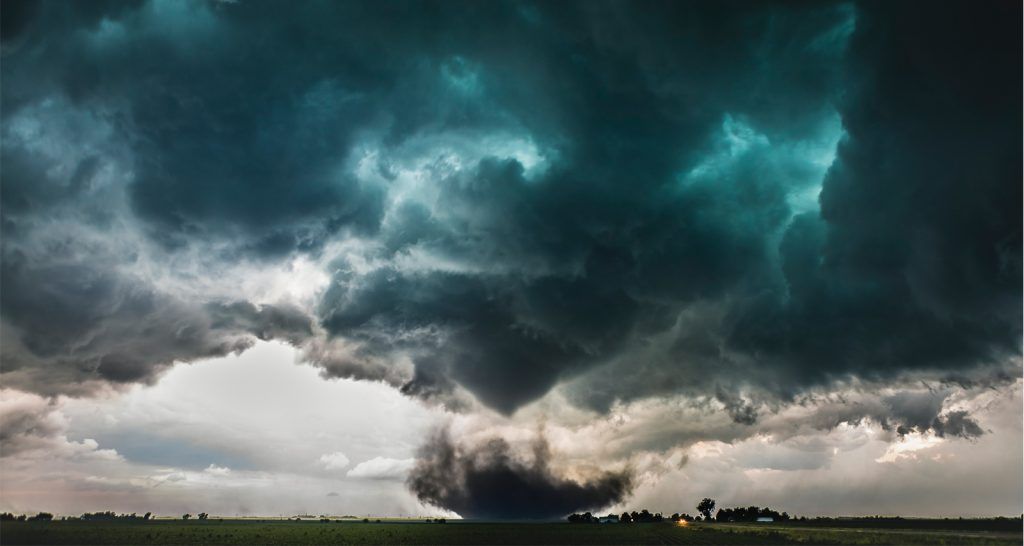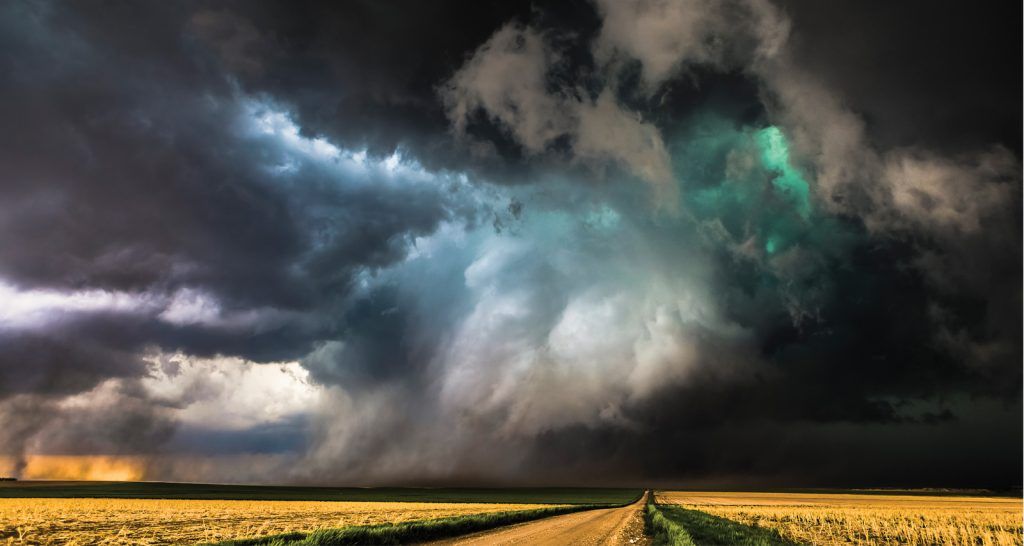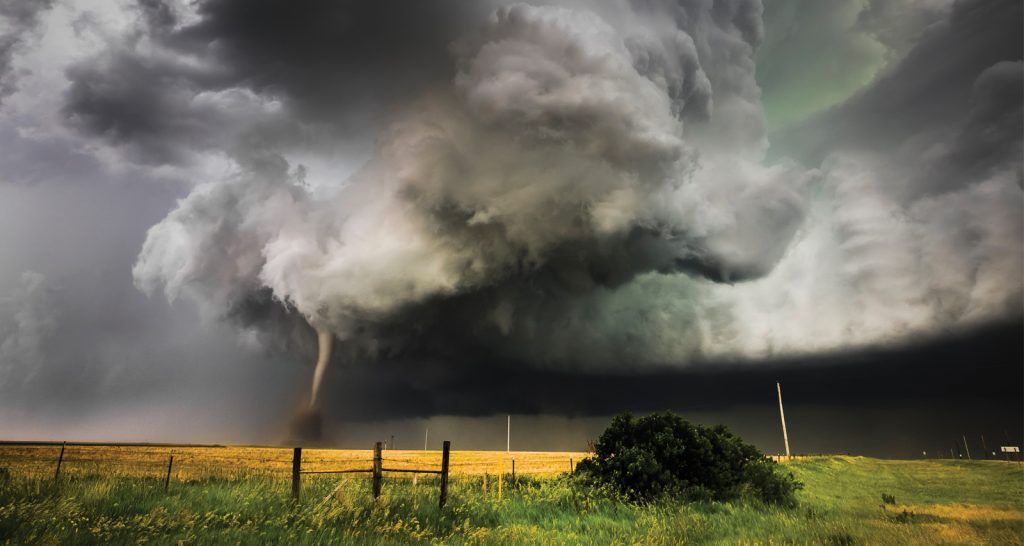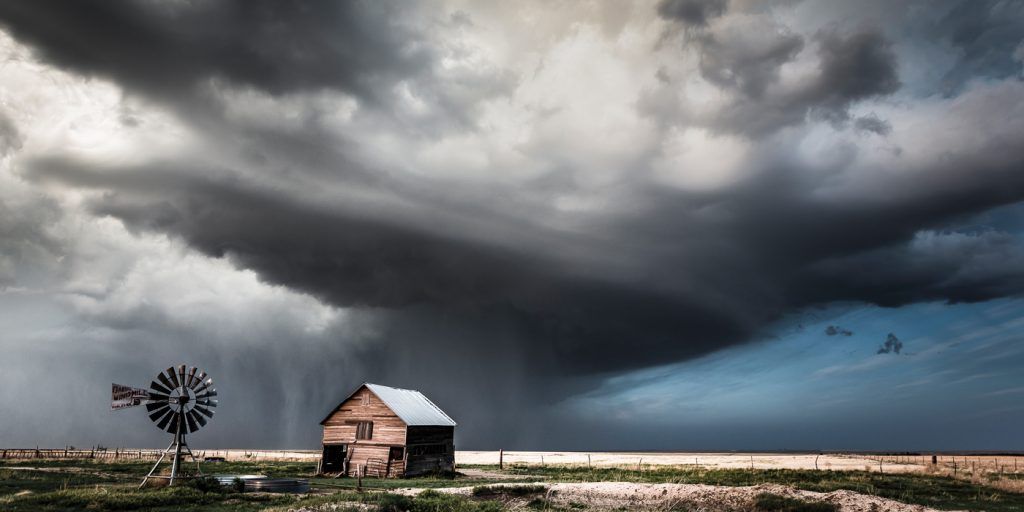Photo Series: Dark And Stormy
The sky above you starts roaring, you feel the earth beneath you quivering and the crisp, whirling air feels like it’s forming icicles on your cheeks. But the lighting is perfect and the brewing tornado plummets to the ground below, you feel the clunk of your camera shutter opening to capture the moment. And you can finally breathe again, knowing you’ve got the shot… But you’re not out of the woods yet.

This might have been what it was like for USA-based, photographer, David Mayhew, while travelling thousands of kilometres to capture some of the most incredible shots for his new book Storm Chaser: A Visual Tour of Severe Weather. We pinned this busy photographer down for a few moments to find out what it is like to chase down giant tornadoes and wild weather in the name of photography.

Where did your passion for photography start?
I’ve always been a visual [person], which is why I went into engineering design. When digital photography came out, the transition from AutoCAD to Photoshop was a natural evolution for me. I did a degree in photography at the College of DuPage in the suburbs of Chicago, where they also have a renowned meteorology program.
What is it that originally sparked your interest in shooting ‘extreme weather’?
I have always enjoyed the weather, it’s about all we Brits ever talk about! When I was studying photography, I wanted something unique, something that would identify me as a photographer as opposed to one of the many who [goes into] a National Park to shoot the same subjects that have been photographed 1000 times. I simply decided to meld my two hobbies together.
What gear do you like to shoot with? Last year I switched to Sony from Canon, the a7R II. I felt the dynamic range and low noise at high ISO would assist with the challenging light I have to deal with. I still use my Canon glass though.
Some of the storms you have photographed have been remote, did you travel a lot for this series? Oooh yes! Many miles go on my car each year. An average chase is 800-1130 kilometres in a day. Sometimes you get lucky and get a few consecutive set-ups in the same area or close to home. I have even driven over 1600 kilometres in a day on a couple of chases. Also, being in remote locations, I am set up to sleep in my car. Near a field. Maybe a few cows for company.
Do you have a special vehicle to keep you safe?
I use a Subaru Forester with no special gear other than a laptop set-up for navigation and radar data. For me, the best shots are at a safe distance. Wind, rain and 10-centimetre hail are not a camera’s friend. Plus there is no point taking an amazing shot of the inside of a tornado if no one is going to see it! For a car, I need reliability to get me there and away safely, good visibility to see what’s coming at me, 4WD and fuel economy/driving range – it’s no good having to turn away from a storm to fuel up.
Have you ever been in a dangerous situation?
You seem to get quite close sometimes! It’s always a calculated risk, but my knees tell me when it is time to bail. The least scary time is when I see the tornado. I know where it is and can see where it is going, as long as I have a decent escape route. The dangerous times are when it is dark, the tornado hasn’t dropped or it is wrapped in rain… or when roads are limited. But part of chase strategy is knowing which areas make for better chases.
How do you know when there will be a photo-worthy storm brewing?
I forecast. I look for specific indicators in the forecast models. Moisture and backed winds are key for me, as well as helicity to produce isolated storms with good structure, as opposed to a line of storms. You can also determine expected storm motion, speed and direction. The HRRR forecast model only calculates outlooks 18 hours out, but does a pretty good job on showing where storms are likely to break and whether they will be isolated.
Does it ever affect you emotionally, experiencing places that are getting destroyed in such ways?
Indeed it does, but while chasing I have to stay ahead of the storm otherwise roads can be blocked by the damage. Chasers always hope for storms to be in remote locations. Plus, chasing in heavily populated areas is not a safe call. If you think about it, severe weather will occur whether I am there or not. The only difference is that I am able to report what I am seeing, which assists in providing warning to local areas.
What is one of the standout storms you have photographed?
I’d have to say June 20th, 2011, in Norton, Kansas. I saw seven tornadoes that day, one of which was the most photogenic I have seen. It turned into quite a wild chase with just an ominous wall of darkness powering forward. I mostly played it safe. Not only that, but I was one of only a handful of chasers on that storm.
Aside from the extreme weather series, what else do you enjoy photographing? Anything sky. You get such an array of emotions from vastness above. Obviously the drama and power of storms, but also the majesty of the night sky or even the serenity of sunset. Northern lights are just so mesmerising to see, too, and again, like weather, can be forecasted for, to a certain degree.


All images courtesy of the Photographer, David Mayhew. See more at davidmayhewphotography.com

